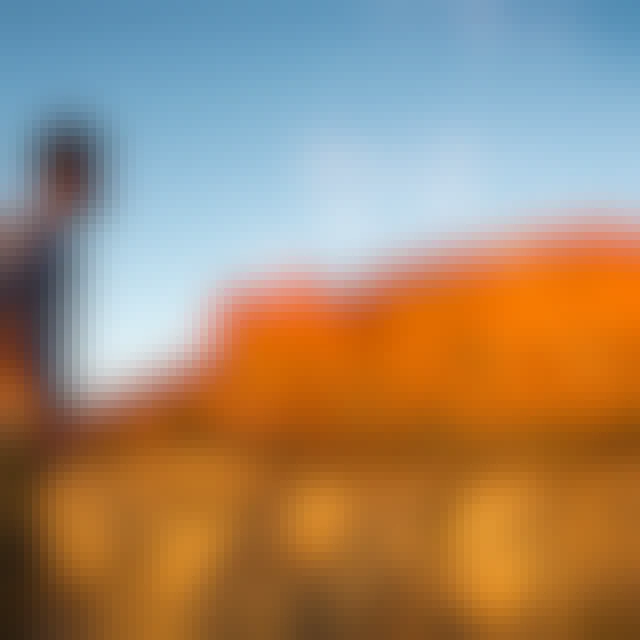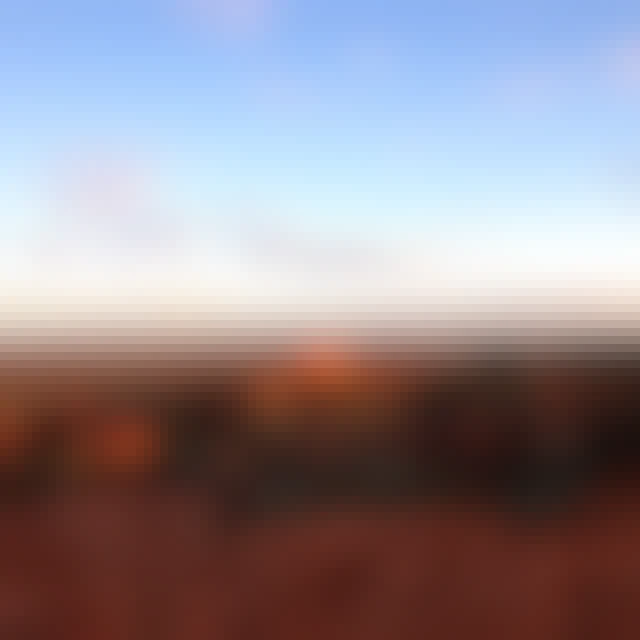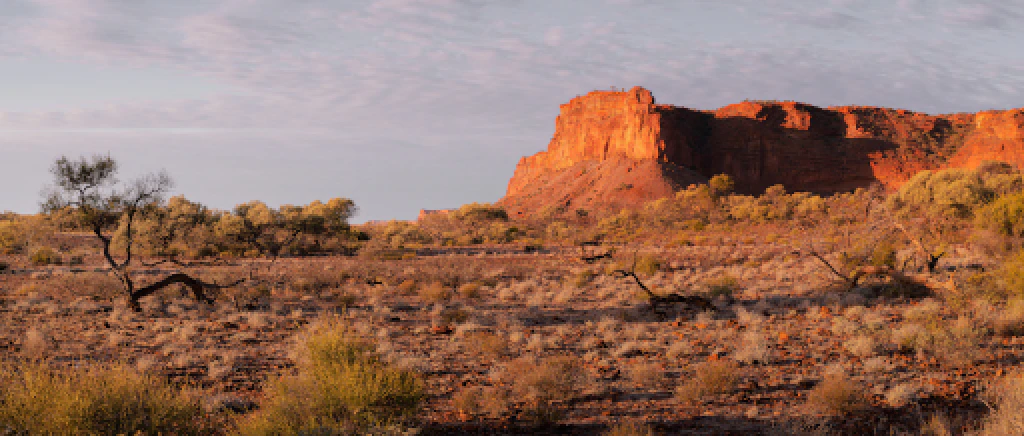
Northern Explorer Wildflower Trail
- Suggested Time: 9 - 12 days.
- Gascoyne Murchison Region
On this northern-bound wildflower adventure a wonderland of Heritage-listed national parks, rugged coastline and ancient rocks awaits the intrepid traveller.
Rise with the sun in Perth and track north along the Indian Ocean Drive to Kalbarri. Must-see pitstops include Dongara, Australia’s rock lobster capital; historic Greenough, with its National Trust-listed buildings; and the seaside town of Port Gregory, with the surreal, candy-pink expanses of nearby Hutt Lagoon.
Gift yourself a full day to explore Kalbarri National Park, an astonishing natural realm. Between June and September these ancient river canyons and cliffs are ablaze with more than a thousand different wildflower species.
Time to venture inland: sleep over in river-town Gascoyne Junction, then stand humbled before the world’s largest monolith, the 1,105 metre high Mount Augustus. Views from the summit are truly unforgettable.
Remote Meekatharra offers a chromatic floral fiesta, as does the mesmerising drive to goldrush-era Paynes Find and the kaleidoscopic surrounds of Wheatbelt town Wubin. Continue your blooming odyssey among the orchids of Mingenew, and on the Everlasting Cultural Trails around little Mullewa, with its striking Spanish-style architecture.
Before looping back to Perth, steer north into the vast tranquillity of Wooleen Station, a National Trust-listed working cattle station as big as a small country, lit with blankets of spring wildflowers and a dazzling, gem-filled night sky.

-
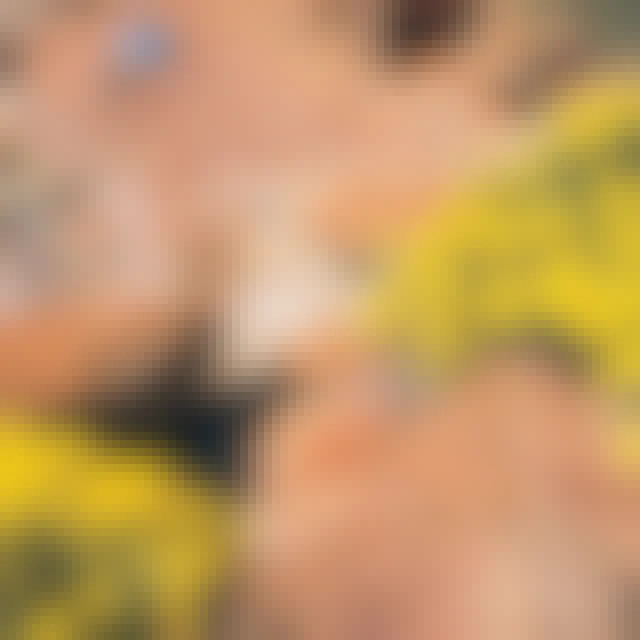 1
1Day 1: Kalbarri National Park
Between July and October, more than 1,100 varieties of Western Australian wildflowers set the surrounding plains and gorges of Kalbarri National Park ablaze with colour, including river gums, gold and orange Banksias, grevilleas, kangaroo paws, featherflowers, starflowers, smoke bushes and eucalypts.To get a closer look at these blooms, and 400…
Between July and October, more than 1,100 varieties of Western Australian wildflowers set the surrounding plains and gorges of Kalbarri National Park ablaze with colour, including river gums, gold and orange Banksias, grevilleas, kangaroo paws, featherflowers, starflowers, smoke bushes and eucalypts.
To get a closer look at these blooms, and 400 million years of natural history, follow one of the park’s bushwalking trails, or take a cruise on the Murchison River.
Return to Kalbarri to relax on the beaches of the coast and inlet. Take an afternoon stroll along the cliff tops, or try your luck at beach fishing to catch dinner. -
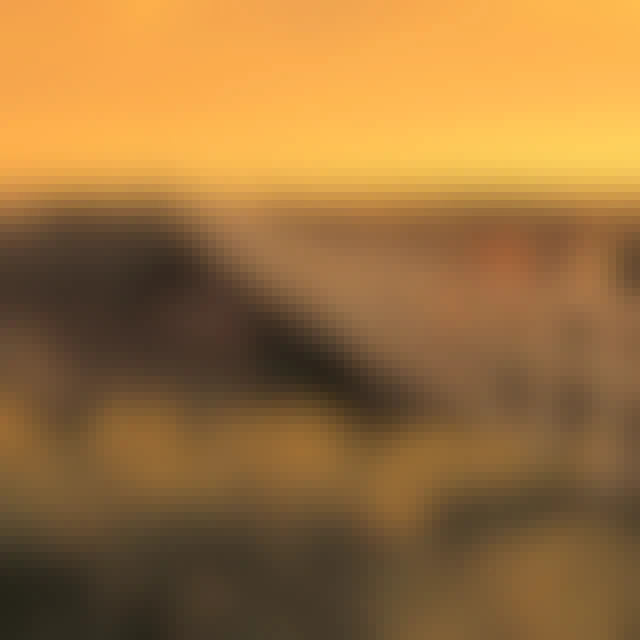 2
2Day 2: Carnarvon (440 km)
From Kalbarri, the drive to Carnarvon takes you past the Tropic of Capricorn and many wildflower varieties, including seasonal everlastings.For lunch, Carnarvon serves up a feast of fresh local seafood and tropical fruits from the region’s plantations.Take a short drive north on the Great Northern Highway and Blowholes Road to reach another World…
From Kalbarri, the drive to Carnarvon takes you past the Tropic of Capricorn and many wildflower varieties, including seasonal everlastings.
For lunch, Carnarvon serves up a feast of fresh local seafood and tropical fruits from the region’s plantations.
Take a short drive north on the Great Northern Highway and Blowholes Road to reach another World Heritage wonder – Ningaloo Reef. It’s the world’s largest fringing reef and famed for some of the best snorkel trails and fishing spots.
The sealed road takes you as far as the Blowholes, where ocean swells force jets of water through sea caves.
From here, you can opt to return to Carnarvon, or take the unsealed Gnaraloo Road north and spend a night or two in tents or cabins at Quobba Station, Red Bluff, Three Mile Camp or Gnaraloo.
Drivers are advised to check road conditions before making the journey. Contact the visitor centres at Exmouth or Carnarvon, or the stations at Quobba and Gnaraloo for up-to-date travel information. -
3
Day 3: Gascoyne Junction (174km)
Leave the coast and head two hours inland for a true four-wheel-drive wilderness adventure through the beautiful range, plains and gorges of Kennedy Range National Park.Spend your day bushwalking along the sandstone cliffs, taking in the sweeping vistas, and getting a closer look at the region’s spring wildflowers, native animals and birds.This is…
Leave the coast and head two hours inland for a true four-wheel-drive wilderness adventure through the beautiful range, plains and gorges of Kennedy Range National Park.
Spend your day bushwalking along the sandstone cliffs, taking in the sweeping vistas, and getting a closer look at the region’s spring wildflowers, native animals and birds.
This is also a great spot to experience the serenity of wilderness camping under a star-filled night sky.
More accommodation options can be found to the south, in and around the township of Gascoyne Junction, including cabins, a caravan park, camping grounds and station stays. -
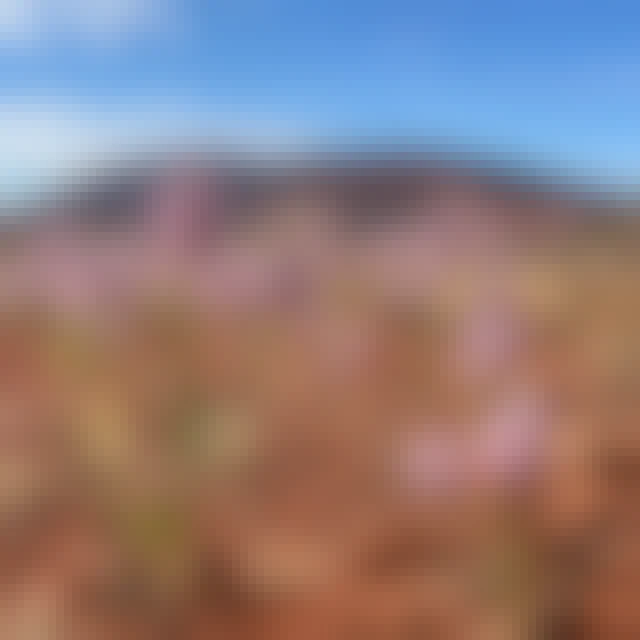 4
4Day 4: Mount Augustus (316km)
At two and a half times the size of Uluru and 1,105 metres tall, Mount Augustus/Burringarrah is the largest rock monolith on Earth – well worth the five-and-a-half-hour drive east from Gascoyne Junction.There are no services on this gravel road (four-wheel-drive recommended), so be sure to replenish your fuel, water and food supplies before…
At two and a half times the size of Uluru and 1,105 metres tall, Mount Augustus/Burringarrah is the largest rock monolith on Earth – well worth the five-and-a-half-hour drive east from Gascoyne Junction.
There are no services on this gravel road (four-wheel-drive recommended), so be sure to replenish your fuel, water and food supplies before leaving Gascoyne Junction.
On arrival, take a short walk for a closer look at the ancient rock art and the mysterious caves of this curious landmark, known as 'Burringurrah' to the local Wadjari Aboriginal people.
Explore the gum trees, wattle, native shrubs and purple carpets of mulla mulla that fill the surrounding plain. Then, as the sunset plays on Mount Augustus, head up to Emu Hill Lookout and watch for emus, kangaroos, honeyeaters and birds of prey.
Units, campsites, a tavern, small shop and fuel are available near the base of Mount Augustus and Mount Augustus Tourist Park sits at the park boundary. -
 5
5Day 5: Meekatharra (330km)
Head out at sunrise to see the monolith bathed in the morning light as you tackle the challenging climb to the summit for incredible panoramas of the plains. Or explore the 49-kilometre base trail by four-wheel-drive.Travel south from Mount Augustus on the unsealed road via Landor (accessible to two-wheel-drvie, four-wheel-drive recommended),…
Head out at sunrise to see the monolith bathed in the morning light as you tackle the challenging climb to the summit for incredible panoramas of the plains. Or explore the 49-kilometre base trail by four-wheel-drive.
Travel south from Mount Augustus on the unsealed road via Landor (accessible to two-wheel-drvie, four-wheel-drive recommended), allowing at least five hours to complete the 340-kilometre journey to Meekatharra.
After good winter rains, wildflowers are prolific in this region, with everlastings, golden Billy buttons, mauve velleia, magenta parakeelya and blue pincushions covering hundreds of kilometres. Also look out for the red Sturt’s desert pea – the signature flower of Meekatharra. -
 6
6Day 6: Paynes Find and Wubin (492km)
You can opt to stay an extra day in Meekatharra to explore the wildflowers and the Meeka Rangelands Discovery Trail, where interpretive signs reveal the region’s settlement history and Indigenous culture.Or make the three-and-a-half-hour drive south to Paynes Find via Cue, Lake Austin, Mount Magnet and more carpets of everlastings on the Great…
You can opt to stay an extra day in Meekatharra to explore the wildflowers and the Meeka Rangelands Discovery Trail, where interpretive signs reveal the region’s settlement history and Indigenous culture.
Or make the three-and-a-half-hour drive south to Paynes Find via Cue, Lake Austin, Mount Magnet and more carpets of everlastings on the Great Northern Highway.
Discover the legacy of the area's first gold mine leaseholder at Western Australia's only working gold battery, and view relics from the mining, pastoral and sandalwood industries at the town museum.
It’s a one-and-a-half-hour drive south to reach the Wheatbelt town of Wubin, where you can join Rabbit Proof Fence Road to the east and explore the wildflower hotspots of Wubin Rocks, Jibberding Reserve and Goodlands Road. Wreath flowers, everlastings, blue cornflowers, wattles, grevilleas and orchids are the main attractions here.
Stay overnight in Wubin or Dalwallinu. -
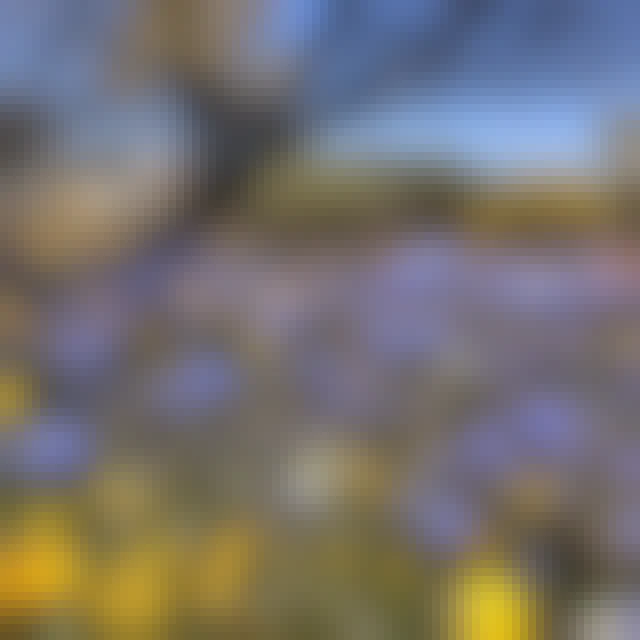 7
7Day 7: Mingenew and Mullewa (270km)
Take the Mullewa-Wubin Road north to the heart of everlastings country, Morawa. A side-trip to nearby Koolanooka Springs will give you some of the best displays in this region.From here, you’re just a 50-minute drive from Mingenew, where the Mingenew Common Wildflower Walk is filled with orchids, everlastings and fringed lilies.Or head out on the…
Take the Mullewa-Wubin Road north to the heart of everlastings country, Morawa. A side-trip to nearby Koolanooka Springs will give you some of the best displays in this region.
From here, you’re just a 50-minute drive from Mingenew, where the Mingenew Common Wildflower Walk is filled with orchids, everlastings and fringed lilies.
Or head out on the unsealed road to Coalseam Conservation Park (approx. 40 minutes one-way) where the acacia scrubland comes alive with everlastings after good winter rains.
From Coalseam Conservation Park, Mullewa is a 40 minute drive, where you can stop to stretch your legs on one of the surrounding Everlasting Cultural Trails, exploring the Spanish mission architecture and breathtaking hinterland along the way.
Stay overnight in the local hotel or Caravan Park. -
8
Day 8: Wooleen Station (200km)
Wooleen Station is six-hour-forty-minute drive north from Mullewa. This National Trust-listed working cattle station is dedicated to conservation and invites you to discover its abundant wildlife, birdlife and wildflowers.Explore the bushwalking and mountain bike trails. Spend a relaxing afternoon enjoying the peace and tranquillity. Or join a…
Wooleen Station is six-hour-forty-minute drive north from Mullewa. This National Trust-listed working cattle station is dedicated to conservation and invites you to discover its abundant wildlife, birdlife and wildflowers.
Explore the bushwalking and mountain bike trails. Spend a relaxing afternoon enjoying the peace and tranquillity. Or join a sunset tour of the region’s ancient landscape, unique flora, fauna and ecology, early pioneering history and Indigenous culture. -
 9
9Day 9: Return to Perth
From here, you can choose to retrace your steps south back to Perth via Mullewa and New Norcia. Or continue north and return to Carnarvon via Gascoyne Junction and experience more of the World Heritage listed wonders of Ningaloo Reef.If you opt to go north, make your first stop the Murchison Settlement – home to Murchison Museum Herbarium, where…
From here, you can choose to retrace your steps south back to Perth via Mullewa and New Norcia. Or continue north and return to Carnarvon via Gascoyne Junction and experience more of the World Heritage listed wonders of Ningaloo Reef.
If you opt to go north, make your first stop the Murchison Settlement – home to Murchison Museum Herbarium, where you can take a botanical walk to view a host of rangeland wildflowers. See 630 varieties of wildflowers contrasted against the rust-red gorges of Cape Range National Park, Ningaloo’s most colourful natural wonders.
Itinerary content originally published on westernaustralia.com





























